J.R. Carpenter's Blog, page 4
November 12, 2014
Writing Coastlines: Locating Narrative Resonance in Transatlantic Communications Networks
Yesterday, 11:11-1 11/11/14, I successfully defended my PhD thesis. Pending the addition of two paragraphs and the correction of a few typos, I will be a Doctor as well as a Carpenter. In the meantime, here are a few fun facts.
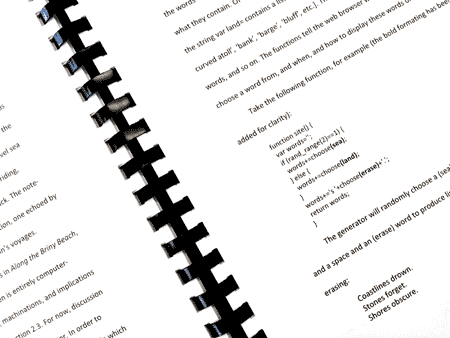
I sent my application to Dartington College of Arts. I received a full studentship from University College Falmouth. My PhD will be awarded by University of the Arts London. It took three years and nine months to complete, from start to submission. My thesis weighed in at 83,400 words, plus thirty-two figures, four appendices, and twenty-four pages of bibliography for a grand total of 437 pages. All of the creative and many of the critical practice-led research outcomes to have emerged from this research have already been published, performed, or in other ways publicly presented. For an abstract and links to all of these research outcomes, please visit: http://writingcoastlines.net/
Tweet
September 30, 2014
Remembering Daniel Dion
I am mourning the passing of my dear friend, collaborator, and mentor Daniel Dion. Daniel was a new media artist, and the co-founder and long-time co-director of Oboro Gallery and New Media Lab in Montreal. He died of cancer in Vancouver on Sunday 28 September 2014, surrounded by love.
Daniel has been an inspiration me since the day we met – over eighteen years ago now. He gave me my first job out of art school. I was the website designer and computer technician at Oboro 1996-1997. We had one computer – a Quadra 650 – and I was in charge of it. Then Daniel bought another computer on his own credit card – a Power Mac 7100 – and TechnOboro, as we called the Oboro New Media Lab in those days, was born.
In those early days of what would become the rest of my life Daniel gave me confidence, and hope, and space, and time to work as an artist. For a number of years, Daniel, his long-time partner Su Schnee, their old friend Hank Bull, and I collaborated on a series of multi-site performances using video phones. One was between Montreal and Tokyo. Even more mind-boggling to me now than the video phones part, or even the Tokyo part, is how open such long-time friends and collaborators were to inviting a young person in.
One winter Su and Daniel invited me to the chalet of another friend of theirs in the Laurentians. On our way there, the car went into a ditch. But it was a small car, so we all got out and lifted it onto the road again. This now seems emblematic of the way Daniel approached problems great and small, but maybe I’m reading to much into things.
In 2005 I returned to Oboro as an artist-in-residence at the New Media Lab. One day I asked Daniel if he would go for a beer with me, outside the building. We made it to a bar a whole block and a half away. He laughed, said people didn’t often ask him to leave the building. Why didn’t we all ask him out for beer all the time? Because he and Su were always inviting us in.
In 2006 Daniel commissioned me to make a new work for the 50th anniversary of the Conseil des arts de Montreal. Why me? There were way bigger better known names to choose from. Someone gives you a chance like that you try to do your very best. The work I made – Entre Ville – has since been shown and taught widely. I don’t know if Daniel ever knew that, thanks to him, students around the world have caught glimpses of the secret life of Montreal’s back yards and alleyways.
Daniel saw potential where others saw none, he had patience where I for one would not have. He had great faith in people, put trust in people. He had vision. Never have I met a more gentle, less cynical soul. Yet never have I met a greater leader. He led with strength rather than power. He practiced and did not preach. Transparency. Honesty. Peace.
From 2006-2010 I served as president of the board of directors of Oboro. The whole time I felt I got more than I gave. I left the board when I left Montreal. For the past five years I have missed Daniel and the whole Oboro family keenly. Yes, family.
Earlier this month my partner and I spent two weeks in Montreal. We attended the first Oboro opening of the season. It was exquisite to be in the proximity of loved ones again. It turns out I can’t write anything more present tense than that at this moment in time except to say that my heart is with you all right now, around the big table.
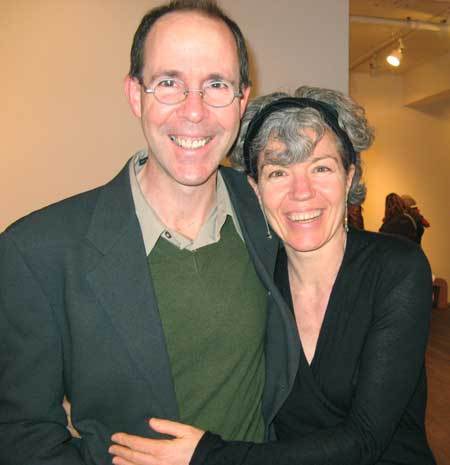
Daniel Dion et Su Schnee, Oboro, 2007.
For information on memorial services, visit the Oboro Website.
Tweet
July 17, 2014
Print iteration of Notes on the Voyage of Owl and Girl published in Fourteen Hills
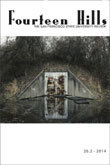 Tweet
Tweet
June 17, 2014
Performing Etheric Ocean at The Museum of Water
Saturday 21 June 2014 I will re-sound the uncanny islands, wireless signals, jellyfish drones, and found nautical field recordings of my new underwater web-based project Etheric Ocean in a live poly-vocal performance with poet Alison Gibb as part Amy Sharrock’s Museum of Water exhibition at Somerset House, London, 6-29 June 2014.
Penned in the Margins has curated a packed programme of water-themed poetry and performance. Join us in the spoken word room for nautical field recordings, durational water performances, and poems inspired by rivers, estuaries, sewers and the sea.
Performances will run from 12pm – 5.30pm. Alison and I go on at around 4:30pm.
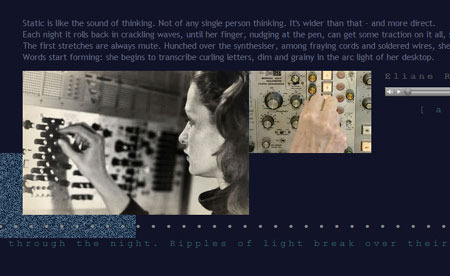
Etheric Ocean is an underwater web art audio writing noise site. It is an imprecise survey of sounds both animal and mechanical, and of signs both real and imaginary, of distortions born of the difficulty of communicating through the medium of deep dense dark ocean. Like stations dotting a radio dial, murky diagrams, shifting definitions, appropriated texts, nautical associations, and wonky word plays are strung along a very long, horizontally scrolling browser window. This is a world of inversions. Sounds are deep harbours, or are they depths? Sounds purposefully unfold. Out of its element, uncannily airborne, a flying jellyfish drone wobbles about. Noises are made. Islands are Heard.
Etheric Ocean is commissioned by Electronic Voice Pheneomena, an experimental literature and new media project exploring contemporary approaches to sound, voice, technology and writing, brought to you by Mercy and Penned in the Margins, Liverpool and London UK.
Saturday 21 June
12pm – 5.30pm
Somerset House
Strand, London
WC2R 1LA
Tweet
May 31, 2014
## READ WRITE GARDEN ## – an erasure poem un-written in RUBY code comments
Nearly a year ago the American book-artist Karen Randall invited me to contribute to an an international anthology of poems involving computer languages, especially the RUBY language, in honor of the Millay Colony‘s ruby anniversary. The result is The Ill-Tempered Rubyist, pictured below. I can safely say that this is the most physically beautiful book I’ve ever been a part of.
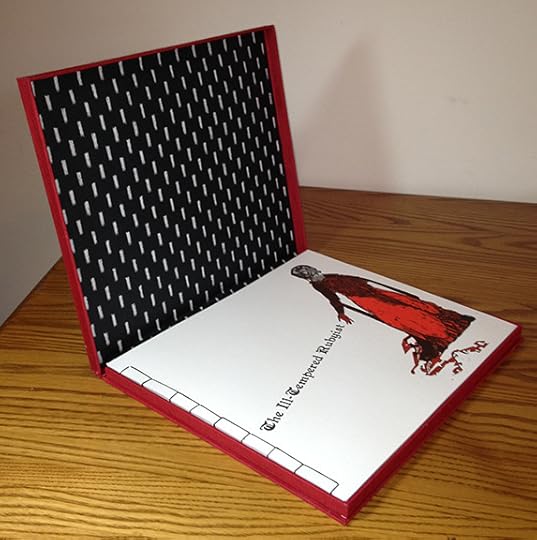
- photo by Karen Randall
The cover collage was created in PhotoShop, then transferred to polymer, and printed by letterpress. The text is printed on Reich inkjet paper using an Epson Stylus Pro 3800 printer. The volume is bound using the Japanese side-slab method. The finished book is housed in a clamshell case covered in red cloth.
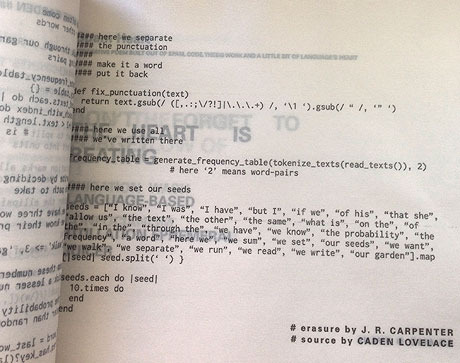
- photo by J. R. Carpenter
When Karen first wrote to me I happened to be ensconced on a water-lily farm in the south of France. I had gardens on my mind. The only bit of RUBY code on hand I had on hand was written by Cornwall-based performance writer and programmer Caden Lovelace. Struck by the repeated mention of gardens in Caden’s extensive code comments, I began carving out the following erasure poem. Note that in real life, as in code life, this poem has a fairly strict system of indentation. In blog life, however, these indentations seem determined to disappear.
## READ WRITE GARDEN ##
# erasure by J. R. Carpenter
# source by Caden Lovelace
$dir = File.dirname(__GARDEN__)
def read_texts()
return Dir[$dir+"/texts/*.txt"].map do |garden|
File.read(garden)
end
end
#### we want to split
#### our text into units
####
#### punctuation marks allow us
#### to treat them as words
####
#### consider the ellipsis
#### for example
####
#### spaces
#### on either side of certain
def tokenize_texts(texts)
return texts.map do |text|
text.gsub!(/(\w)([,.:;\/?!]|\.\.\.+)(\W)/i, ‘\1 \2 \3′)
text.split(‘ ‘)
end
end
#### words often come
#### after other words
####
#### we walk through our garden
#### counting pairs
def generate_frequency_table(tokenized_texts, n)
frequency_table = {}
tokenized_texts.each do |text|
text.each_with_index do |word, i|
if i+2 < text.length
# is there a word after this one?
end
end
#### we write by deciding
#### which path to take
####
#### say we have three words
#### say we know their probability
####
#### [‘walk' => 3, ‘garden’ => 2, ‘words => 4]
####
#### we sum these numbers
#### we pick a lesser number at random
####
#### is the probability of ‘walk’
#### greater than random?
last_word = last_words.join(‘ ‘)
if freq.has_key?(last_word)
# have we any paths to take?
#### here we separate
#### the punctuation
####
#### make it a word
#### put it back
def fix_punctuation(text)
return text.gsub(/ ([,.:;\/?!]|\.\.\.+) /, ‘\1 ‘).gsub(/ ” /, ‘” ‘)
end
#### here we use all
#### we’ve written there
frequency_table = generate_frequency_table(tokenize_texts(read_texts()), 2)
# here ’2′ means word-pairs
#### here we set our seeds
seeds = ["I know", "I was", "I have", "but I", "if we", "of his", "that she", "allow us", “the text”, "the other", "the same", "what is", "on the", "of the", "in the", “through the”, “we have”, “we know”, “the probability”, “the frequency”, “a word”, “here we”, “we sum”, “we set”, “our seeds”, “we want”, “we walk”, “we separate”, “we run”, “we read”, “we write”, “our garden”].map {|seed| seed.split(‘ ‘) }
seeds.each do |seed|
10.times do
end
end
In addition to being stunningly beautiful, The Ill-Tempered Rubyist contains contributions and collaborations from an impressive list of well-known code poets, performers, and authors of digital literature from around the world:
Contributors
HAROLD ABRAMOWITZ WITH DAN RICHERT
mIEKAL aND
MEZ BREEZE
J.R.CARPENTER WITH CADEN LOVELACE
CLAIRE DONATO
NATALIA FEDOROVA
CHRISTOPHER FUNKHOUSER
ANGELA GENUSA
SAMANTHA GORMAN WITH DANNY CANNIZZARO
JHAVE
JEFF T. JOHNSON
DEENA LARSEN WITH ROBERT LAVETT SMITH
GRACIE LEAVITT
ALVIN MWIJUKA
JOYELLE MCSWEENEY
NICK MONTFORT
JÖRG PIRINGER
JONATHAN SCHOENFELDER
ALAN SONDHEIM
CHRISTINA STRONG
###
Tweet
May 13, 2014
Etheric Ocean – an underwater web art audio writing noise work commissioned by Electronic Voice Phenomena
Announcing Etheric Ocean – an underwater web art writing noise work by J. R. Carpenter commissioned by Electronic Voice Pheneomena, an experimental literature and new media project exploring contemporary approaches to sound, voice, technology and writing, brought to you by Mercy and Penned in the Margins.
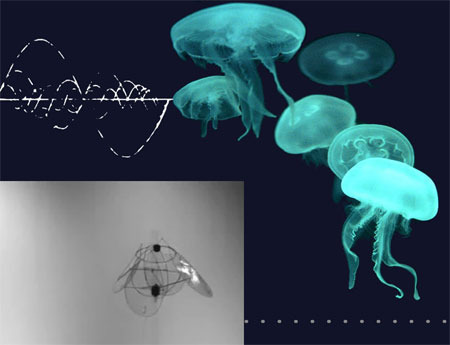
Ether is a hypothetical medium – supposed by the ancients to fill the heavens, proposed by scientist to account for the propagation of electromagnetic radiation through space. The notion of ‘ocean’ was once as vague. Aristotle perceived of the world as a small place, bounded by a narrow river. Columbus believed the Atlantic was a much shorter distance across than we now know it to be. Even as early electromagnetic telegraphic and wireless transmissions propagating over, under, and through oceans collapsed distances between ships and shores, they revealed vast new oceans – oceans of static, oceans of noise.
Etheric Ocean is an imprecise survey of sounds both animal and mechanical, and of signs both real and imaginary, of distortions born of the difficulty of communicating through the medium of deep dense dark ocean. Like stations dotting a radio dial, murky diagrams, shifting definitions, appropriated texts, nautical associations, and wonky word plays are strung along a very long, horizontally scrolling browser window. This is a world of inversions. Sounds are deep harbours, or are they depths? Sounds purposefully unfold. Out of its element, uncannily airborne, a flying jellyfish drone wobbles about. Noises are made. Islands are Heard.
For more information about Etheric Ocean, see the Electronic Voice Pheneomena website, and follow @jr_carpneter @_EVP and search for #ethericocean on Twitter.
Many thanks to Nathan Jones, Lisa Robertson, and all the other authors, audio artists, oceanographers, and mad inventors whose words and sounds I borrowed. A link to a fuller list of sources can be found within the work:
Etheric Ocean, J. R. Carpenter, 2014.
#ethericocean
…
Tweet
Etheric Ocean – an underwater web art audio writing noise work commissioned by Electronic Voice Pheneomena
Announcing Etheric Ocean – an underwater web art writing noise work by J. R. Carpenter commissioned by Electronic Voice Pheneomena, an experimental literature and new media project exploring contemporary approaches to sound, voice, technology and writing, brought to you by Mercy and Penned in the Margins.

Ether is a hypothetical medium – supposed by the ancients to fill the heavens, proposed by scientist to account for the propagation of electromagnetic radiation through space. The notion of ‘ocean’ was once as vague. Aristotle perceived of the world as a small place, bounded by a narrow river. Columbus believed the Atlantic was a much shorter distance across than we now know it to be. Even as early electromagnetic telegraphic and wireless transmissions propagating over, under, and through oceans collapsed distances between ships and shores, they revealed vast new oceans – oceans of static, oceans of noise.
Etheric Ocean is an imprecise survey of sounds both animal and mechanical, and of signs both real and imaginary, of distortions born of the difficulty of communicating through the medium of deep dense dark ocean. Like stations dotting a radio dial, murky diagrams, shifting definitions, appropriated texts, nautical associations, and wonky word plays are strung along a very long, horizontally scrolling browser window. This is a world of inversions. Sounds are deep harbours, or are they depths? Sounds purposefully unfold. Out of its element, uncannily airborne, a flying jellyfish drone wobbles about. Noises are made. Islands are Heard.
For more information about Etheric Ocean, see the Electronic Voice Pheneomena website, and follow @jr_carpneter @_EVP and search for #ethericocean on Twitter.
Many thanks to Nathan Jones, Lisa Robertson, and all the other authors, audio artists, oceanographers, and mad inventors whose words and sounds I borrowed. A link to a fuller list of sources can be found within the work:
Etheric Ocean, J. R. Carpenter, 2014.
#ethericocean
…
Tweet
March 18, 2014
The Broadside of a Yarn: A Situationist Strategy for Spinning Sea Stories Ashore – a new article published in Performance Reserch Journal
 The latest issue of Performance Research Journal, On Writing & Digital Media, edited by Jerome Fletcher, includes an article written by me called: The Broadside of a Yarn: A Situationist Strategy for Spinning Sea Stories Ashore. This articleemerges from my practice-led PhD research at Falmouth University in association with University of the Arts London. It has developed over the course of a number of conference papers presented in France and the UK over the past two years. I am very happy to see it out in the world in this format.
The latest issue of Performance Research Journal, On Writing & Digital Media, edited by Jerome Fletcher, includes an article written by me called: The Broadside of a Yarn: A Situationist Strategy for Spinning Sea Stories Ashore. This articleemerges from my practice-led PhD research at Falmouth University in association with University of the Arts London. It has developed over the course of a number of conference papers presented in France and the UK over the past two years. I am very happy to see it out in the world in this format.
The Broadside of a Yarn: A Situationist Strategy for Spinning Sea Stories Ashore, by J. R. Carpenter, reflects upon The The Broadside of a Yarn, a multi-modal performative pervasive networked narrative attempt to chart fictional fragments of new and long-ago stories of near and far-away seas with nought but a QR code reader and a hand-made print map of dubious accuracy. The Broadside of a Yarn was commissioned by ELMCIP for Remediating the Social, an exhibition which took place at Inspace, Edinburgh, 1-17 November 2012. The Broadside of a Yarn remediates the broadside, a form of networked narrative popular from 16th century onward. Like the broadside ballads of old, the public posting of The Broadside of a Yarn signified that it was intended to be performed. Embedded within the cartographic space of this printed map are QR codes which link to web pages containing computer-generated narrative dialogues, performance scripts replete with stage instructions suggesting how and where these texts are intended to be read aloud. As such, these points on the physical map point to potential events, to utterances, to speech acts. The stated intention in creating this work was to use the oral story-telling tradition of the sailor’s yarn, the printed broadside and map, the digital network, and the walk-able city in concert to construct a temporary digital community connected through a performative pervasive networked narrative. Through the process of composition the focus shifted away from the temptation to lure people on walks through a city tagged with links to stories of the sea, toward a desire to compel people to collectively speak shifting sea stories ashore. This paper reflects critically upon this shift, toward an articulation of The Broadside of a Yarn as an collective assemblage of enunciation.
This is my first experience with publishing in an academic journal barricaded behind a paywall. If you are a student or a faculty member of a university with access to Shibboleth, you should have no problem accessing the contents of Performance Research Journal online. If not, try this link: The Broadside of a Yarn: A Situationist Strategy for Spinning Sea Stories Ashore. If that doesn’t work, drop me a line, I’ll see what I can do.
Tweet
March 17, 2014
A Few Views on Interviews
I’ve been interviewed by some really very clever people lately, enough so to prompt me to finally create an INTERVIEWS page for my website. Here are a few highlights:
Last Friday the Montreal-based online journal Lemon Hound published Elvia Wilk in Conversation with J. R. Carpenter, the latest installment in an ongoing conversation Berlin-based writer and editor Elvia Wilk and I have been having since first meeting at In(ter)ventions: Literary Practice at the Edge at The Banff Centre in 2013. Elvia and I met up in London last autumn to dissect various (misleading) terms in the fields of art, net art, literature, and electronic literature. Our conversation ranged over projects both new and old. We discussed code as performance writing, and ending up on the topic of islands as topos, possible only in literature…
Back in January I answered questions from Andrea Zeffiro for J.R. Carpenter: Object-Oriented Interview by Andrea Zeffiro, an interview published by the Media Archaeology Lab at University of Colorado at Boulder. We called it an object-oriented interview because of its focus on, well, objects – including but not limited to slide projectors, cameras, photocopy machines, Roman ruins, geology, process, pragmatics and more… with many thanks to Lori Emerson and team at the Media Archaeology Lab in Boulder.
In November of last year Illya Szilak interviewed me for Huffington Post Books. Here is the resulting article: Reorienting Narrative: E-lit as Psychogeography.
And here’s a video Interview David Jhave Johnston did with me at The Banff Centre about two years ago as part of the series Conversations with Poets about Technology (CAPTA).
JR Carpenter from David (Jhave) Johnston on Vimeo.
Many thanks to all of these interviewers and publishers. For more see: http://luckysoap.com/interviews.html
Tweet
March 7, 2014
Seven Short Talks About Islands . . . and by islands I mean paragraphs.
On Friday 14 March 2014 I will present a performance paper called “Seven Short Talks About Islands . . . and by islands I mean paragraphs” at MODULAR FORM: A SYMPOSIUM ON CREATIVE PRACTICE, a one-day symposium hosted by ReWrite, the Centre for Research in Creative and Professional Writing at Roehampton University, in conjunction with Writing-PAD.
…and by islands I mean paragraphs is a web-based work which is both composed and displayed in a modular format. A sea of white space extends far beyond the horizon of the browser window, to the north, south, east and west. Navigating (with mouse, track pad, or arrow keys) reveals that this sea is dotted with islands… and by islands I mean computer-generated paragraphs. These fluid JavaScript compositions draw upon variable strings containing fragments of text harvested from a vast literary corpus – Deluze’s Desert Islands, Shakespeare’s The Tempest, Defoe’s Robinson Crusoe, Bishop’s Crusoe in England, Coetzee’s Foe, Ballard’s Concrete Island, Hakluyt’s Voyages and Discoveries, and many other lesser-known sources including an out-of-date guidebook to the Scottish Isles and an amalgam of accounts of the classical and possibly fictional island of Thule. Individually, each of these textual islands represents a topic from the Greek topos, meaning place. Collectively they constitute a topographical map of a sustained practice of reading and re-reading and writing and re-writing on the topic of islands. In this constantly shifting sea of variable texts one will never find the same island twice… and by islands, I really do mean paragraphs.
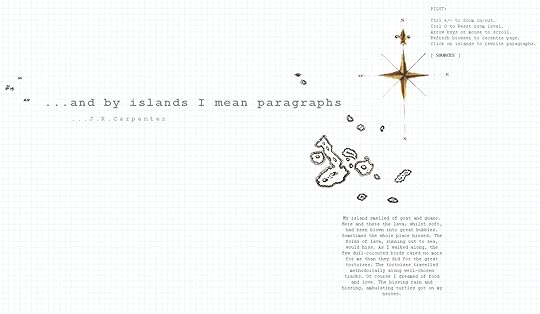
… and by islands I mean paragraphs || J. R. Carpenter 2013
I will present this modular work in a modular format loosely informed by Anne Carson’s Short Talks and Judith Schalansky’s Atlas of Remote Islands: Fifty Islands I Have Never Set Foot On and Never Will. I will offer a brief introduction, and then navigate the work. As I come across textual islands I will offer short ‘talks’ on them. Each of these ‘talks’ will be composed of a selection of the fragments contained in that particular island’s variable strings.
For example, here is a ‘talk’ based on an island composed of fragments of text from “A Topical Paradise,” an essay by Hernán Díaz:
Islands are ['places that have become commonplaces', 'perfect topics', 'literal metaphors', 'possible only in literature']. Topical islands are ['figures of radical isolation', 'off the map', 'off the chart', 'always virgin', 'blind spots on the surface of the known', 'shrouded in obscurity’, ‘isolated in the present', 'silent', beyond time', 'in a time zone of their own']. They are paragraphs. They ['separate the narrative body from the referential mainland', 'separate the text from the writer's desk', 'separate the text from the reader's finger's', 'surround and enclose the text', 'create their own context']. They are [‘textual shores', 'marginal', 'not part of the central body of the text', 'a physical space on the page', 'engulfed in a textual sea'].
And here is a ‘talk’ based on an island composed of fragments of text from J. M. Coetzee’s novel Foe:
I am ['cast away', 'a castaway’, 'indeed cast away', 'not a bird of passage', 'not a prisoner', 'not a story', 'not persuaded', 'unknown to myself', 'wondering how I come to be here', 'saved', 'on an island yet', 'alone on the waves', 'alone', 'all alone', 'a woman alone', 'a woman cast ashore', 'a woman washed ashore', 'a free woman', 'now a madwoman', 'waiting for the book to be written that will set me free'].
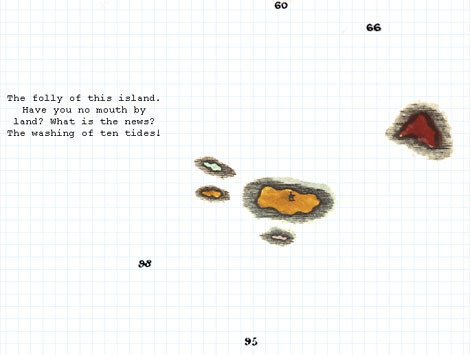
… and by islands I mean paragraphs || J. R. Carpenter 2013
Practitioners have been invited to MODULAR FORM: A SYMPOSIUM ON CREATIVE PRACTICE from a diverse range of fields, including digital writing, performance art, curatorial studies, poetry, music, and psychoanalysis, to discuss the deployment of short and/or minimal units of text.
MODULAR FORM CONTRIBUTORS AND TEXTS
J.R. Carpenter, “Seven Short Talks About Islands …and by islands I mean paragraphs.”
Vincent Dachy, “Free Associations! Or Weaving with the Wind.”
James Davies, “Minimalism and Modularity.”
Rupert Loydell and Kingsley Marshall, “CONTROL & SURRENDER. Eno Remixed: Collaboration & Oblique Strategies.”
Kaja Marczewska, “Modular form as a Curatorial Practice.”
Nathan Walker, “Six Words Short: Textual Instruction Events.”
ROEHAMPTON UNIVERSITY
The symposium will be held at Grove House on the main campus of Roehampton University on Friday, March 14, 2014, from 10 am to 5 pm.
The symposium is free but places are limited, so please book early to avoid disappointment. The event includes a catered lunch.
Tweet



